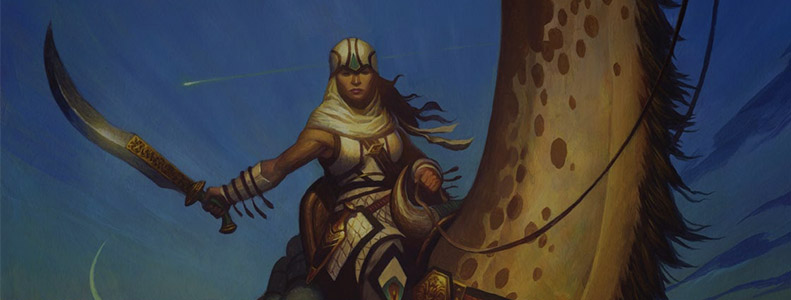Steve Prescott Interview
Welcome to our MTG Artists Interview series There’s no Magic without art.
We had the chance to catch up with Steve Prescott over Skype and got a chat about his work on Magic: The Gathering. Here’s what Steve told us.
Hi Steve. Can you introduce yourself?
My name is Steve Prescott and I have been working in the fantasy gig Industry since 95, maybe 94. I started out right out of college by doing a bunch of work for a company called White Wolf games, doing a lot of contemporary horror-type stuff like vampires and werewolves.
The White Wolf stuff led to doing Shadowrun work, which let me into doing a few other assignments for, you know, smaller companies there.
I gradually made my way to Wizards of the Coast in about 2002/2003, working on Dungeons & Dragons (D&D) and Forgotten Realms, and a few years later I started working for Magic.
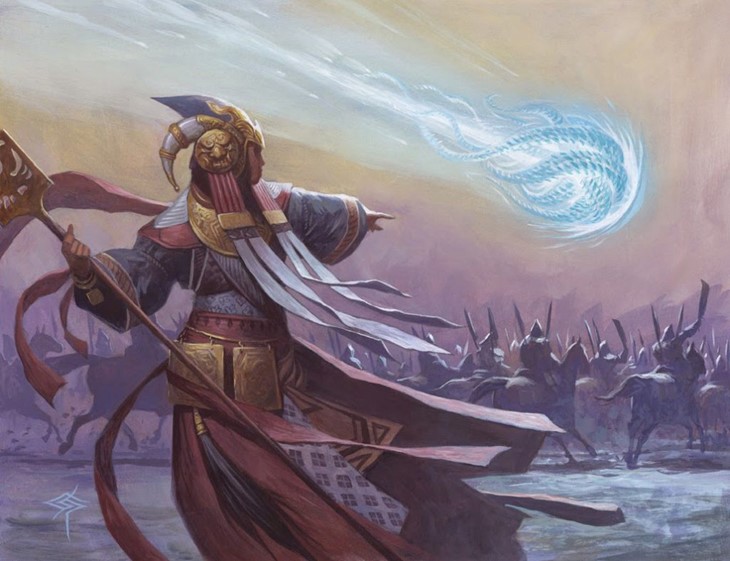
Did you have formal education or were you self-taught?
Both, I’d say. I did go to school and graduated with a bachelor’s degree in fine arts at the Columbus College of Art & Design. What that entails is giving you the medium and the fuel for teaching yourself sort of speak. I like to consider it both self-taught and learned education.
Were you familiar with the game at the time?
I was familiar in the vaguest sense. I played D&D in college with my buddies, but they started playing Magic in the mid-nineties. They were all very good at it, they got a good mind for gaming, but I don’t, I’m terrible at strategy games [Laughs]. So I just watched over their shoulder and appreciated the cool game with awesome artwork.
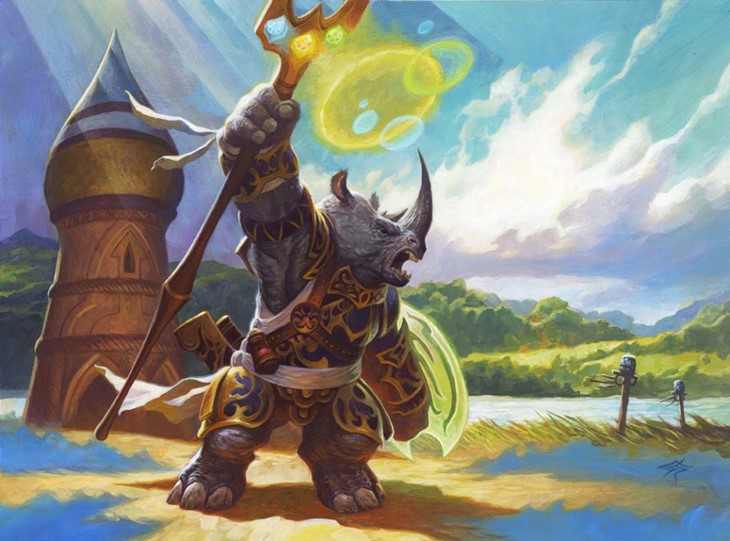
You work mainly with the traditional medium?
All the work I’ve done for Magic has been completely traditional. If I’m doing concept design I’ll often use a mixture of pencil and photoshop, but otherwise, yeah, I’m an acrylic artist.
For hearthstone I’ll tweak certain details digitally because they’ll often have a fix or two after I send them the final, that usually doesn’t happen with Magic.
Can you visualize the final picture with ease, or do you find it as you go?
I find it as I go much more often. I’ll work out a lot of it on the sketch phase, if I can get the drawing right, the mood, and the facial expression right, then I can make everything else work very effectively.
But it usually isn’t that smooth of a process, there’s a lot of erasing and even when I get to the painting phase I will often change my mind, not so much on the structure of the painting, but on the colors. It’s definitely an organic process.
I have a quote here from you that says “I know if it’s right when I see it”
Yeah, that’s a shorter version of saying it than what I just battered out [Laughs].
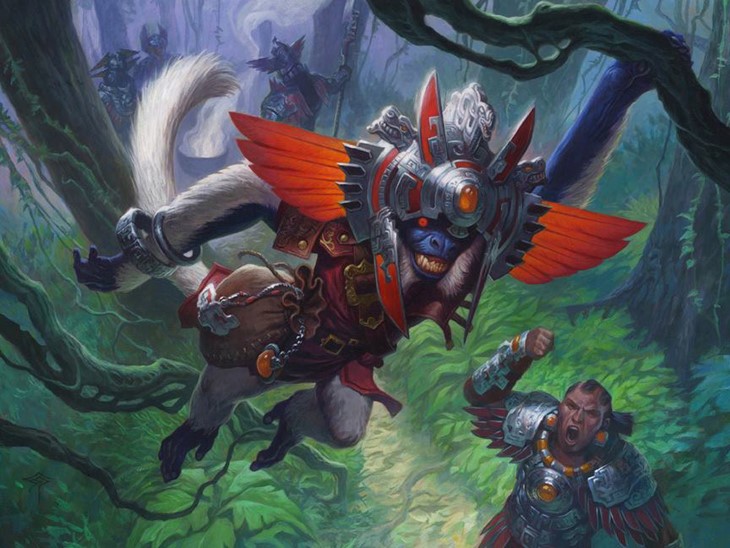
What kind of art descriptions do you usually get?
It depends on the assignment obviously. There are some artists that grasp abstract concepts better, like “Show time melting away” [Steve uses a very deep voice], you know? That’s not my forte.
I can do that, but I think other artists do a much better job at that. So they go with those artists for that. They like me for something that’s whimsical, that has a touch of humor in it, and is a creature or costume design oriented.
You mentioned Fauna Shaman took you a week to paint, that’s a long time.
Yeah, depends on how smoothly everything is going. I just did one for Magic – can’t talk about it in detail obviously – but it took about a week, not because anything is going wrong, but because I just started getting into the details and had to get references for some specific elements.
Usually, they take 3-4 days, depending on how many figures might be on the piece.
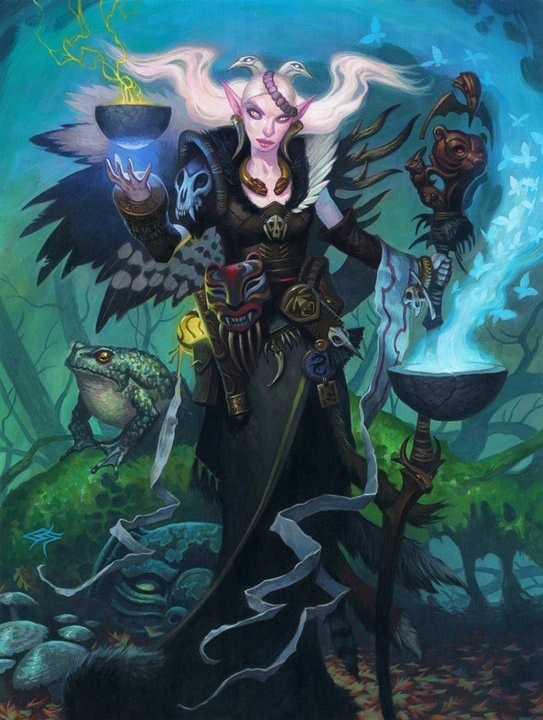
When sorting through your cards by color, I noticed you only painted 9 black cards out of almost 200…
[Laughs] That sounds about right actually. If you’re gonna paint a black card, you have to have a darker approach I guess.
My stuff always has a sense of humor whether I want it or not. My grizzliest black card has a comic book-type flare to it, so it isn’t as gritty as they’d like.
When we interviewed Christopher Moeller, he said that for him white cards were the ones that required more thought. What’s your relationship with the different colors?
Well, I don’t read a description and say “Oh man! It’s a white card! I don’t wanna do that!”, you know? [Laughs]
But I agree with Chris, there is a certain aspect to each. I fit in best with red and green cards, I think. ‘Cause, it’s usually a lot of chaos, there’s some whimsy, there are animals, whether cute or ferocious, and that kind of fits my look a little bit better.
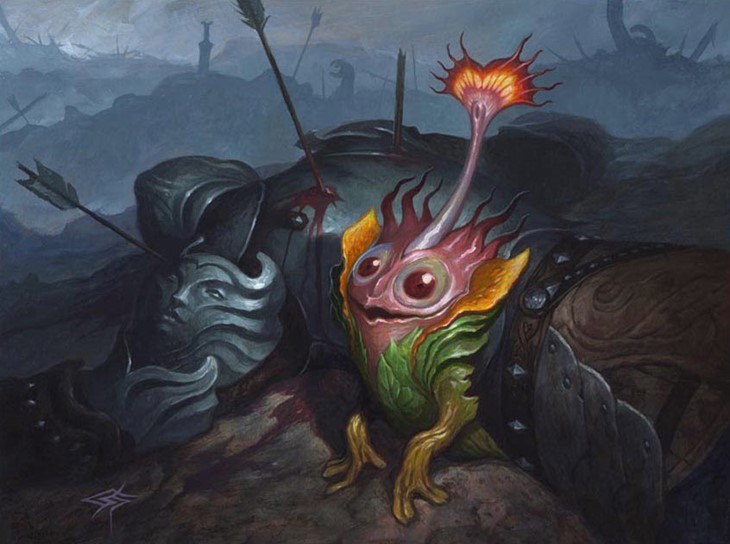
But blue usually has some mystical magic elements, and there are some other artists that do that better than I do; white almost has some abstract approach to it and there are artists that do that better than I do, and of course, black needs a really dark approach in order to be cinematic, and not be funny [Laughs], and there are artists that do that better than I do!
Whatever card color they give me I always try to do my best and trust they gave that card to me for a reason.
Some artists struggle with cards that have many figures, and some struggle with backgrounds and buildings, do you have an Achilles-heel?
Hmm. Achilles-heel you said? [Laughs] I do, but I think art directors stir me clear of any stuff where I could get tangled up. Like if I had to do a sprawling cityscape where it was pertinent to get the right lighting and detail, that would take me a lot longer than I wanted to. I could get it done, but there are other artists that can do it better and faster, an art director wouldn’t put me in that position, they’d want to use my strengths.

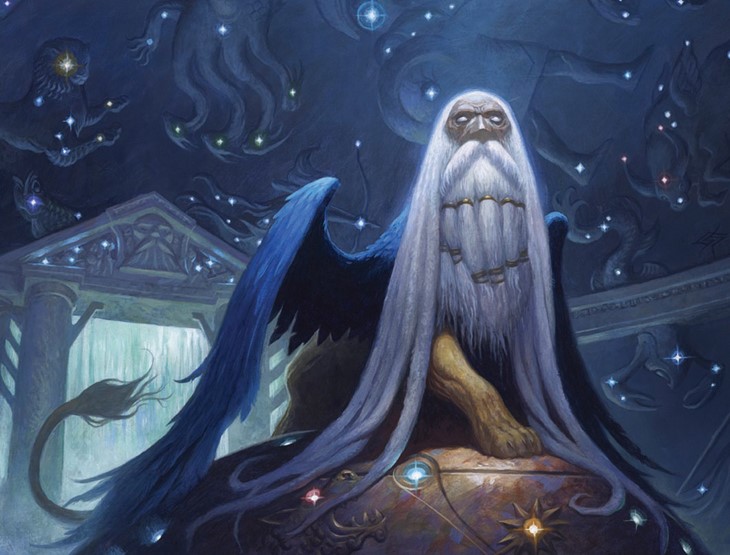
You mentioned in the past that, of the cards you made, you really dislike – Battle Rampart..
Damn it! Don’t bring that card up! [Laughs]. It’s funny you brought that up, last week I got an email from someone saying they like the card and that only I could pull off those colors. That may have softened my view on the card.
That card just wasn’t working out, so I started pushing out the colors as far as I could just to make it kind of gory. Whatever else I had in mind wasn’t working. Someone that didn’t see the process wouldn’t know it, but when I see it I’m like: “that card makes me feel bad!” [Laughs]
I guess when you look at the card you can see the whole process behind it, while we just see the end product. I guess it’s hard to look at something you made with fresh eyes, maybe it’s something that takes years.
There are plenty of cards where I felt “I don’t want to look at this anymore, I don’t want to see it”, and years later I’ll go back and, while I won’t say “Hey! This was a tremendous piece of art”, there will be some aspect of it where I’ll say “you know what? that worked out alright!”. I give myself a mild pat on the back [Laughs].
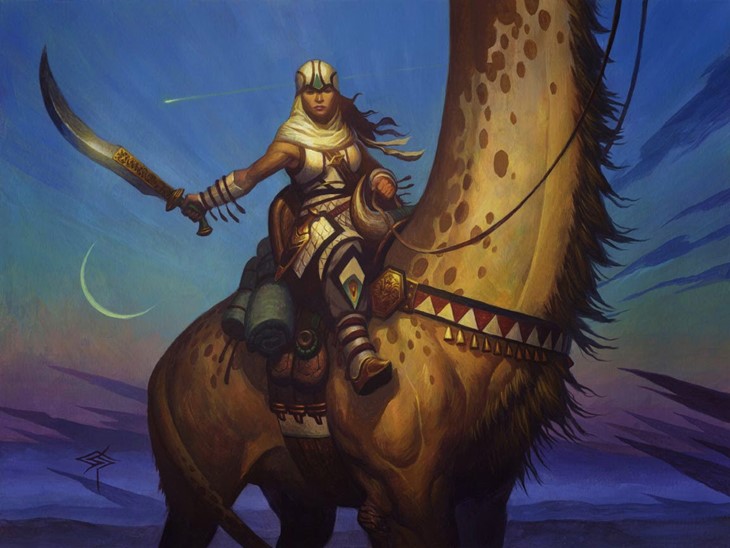
I really like your Goblin Contraptions from Unstable, this is a single painting divided into 9 individual cards. How did this come to be?
It’s definitely the biggest painting I’ve done, and the biggest Magic card – soft to speak, because it’s actually nine cards. And going back to your previous questions, that was probably the most involved and most difficult piece to do, just because it was so detail-intensive.
Because it was goblins, almost anything could work in it, I didn’t get to have this specific light source and make it look like this contraption could actually work, it was supposed to be chaotic and zany and whimsical, and in that respect, everything worked out great. It took a lot to lay it out and make sure that all the pieces were going to fit the nine cards in the right way, it was interesting though, I had a lot of fun with that challenge.
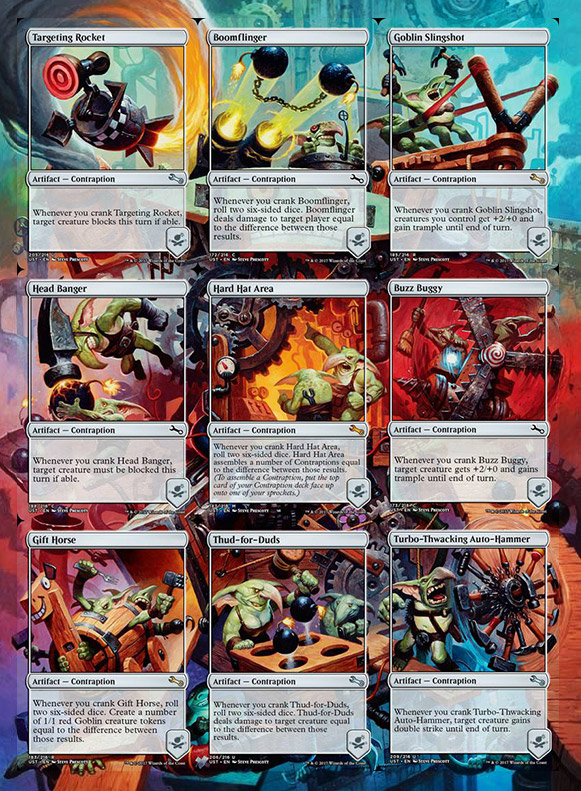
For the Comic Con Planeswalkers, the black effect was added on post-production right?
Those were done for some other project, and right, when I turned it in they, said “you know what, we’re gonna use these for these Magic cards”.
I just did them pretty much black on white, almost like I would if was painting a comic book page or something. They came up with the idea to make gloss black on flat black or whatever and just the color of the magic, but I thought they did a fantastic job with that.
Can you name your favorite paintings?
I have a bunch because I like certain parts of a lot of them. Even though there are other elements in the piece, I will like I piece just because “Oh I like how I handled the clouds”.
The goblin contraption is a good one, there was just so much work and so much fun.
I like Kiora’s Follower, Silver Knight, I like Prognostic Sphinx…, the armory guy from Shadows over Innistrad, I don’t know, there’s a handful.
We want to thank Steve for taking the time to talk to us and share his vision.
You can find more about Steve on his website
Recommended Posts

Adam Paquette Interview
Welcome to our MTG Artists Interview series There's no Magic without art. For this week's interview, we talked with Ad
Read More
Anson Maddocks Interview
Welcome to our MTG Artists Interview series There's no Magic without art. We're very happy to share with you our talk
Read More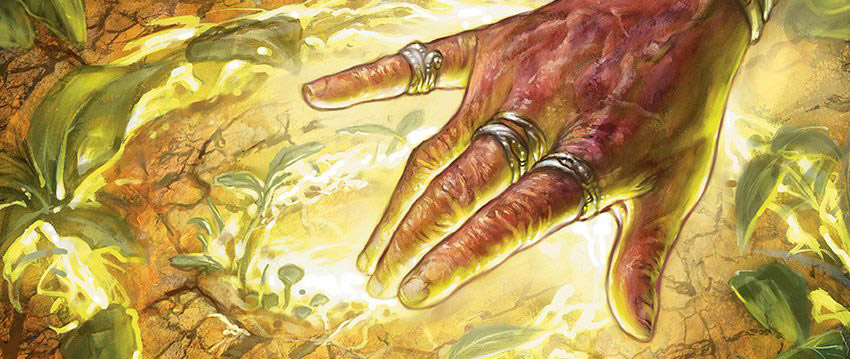
Anthony Palumbo Interview
Welcome to our Artists Interview series - There's no Magic without art - where we talk to artists about their work on
Read More